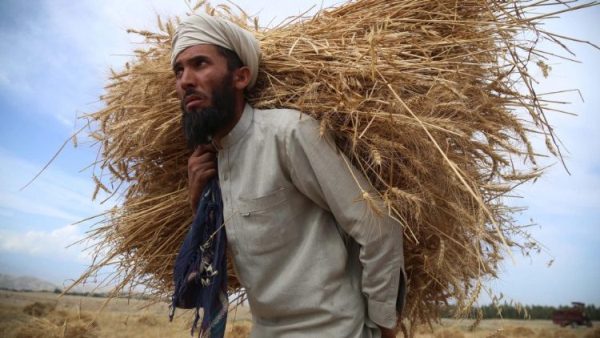FAO report: 3 billion people cannot afford a healthy diet
 The UN Food and Agriculture Organization’s The State of Food and Agriculture (SOFA) report for 2021 stresses the need to make agri-food systems more resilient to shocks and stresses, such as the Covid-19 pandemic, extreme weather conditions and armed conflicts.
The UN Food and Agriculture Organization’s The State of Food and Agriculture (SOFA) report for 2021 stresses the need to make agri-food systems more resilient to shocks and stresses, such as the Covid-19 pandemic, extreme weather conditions and armed conflicts.
An estimated 3 billion people, almost 40 per cent of the world’s population, cannot afford a healthy diet. Another 1 billion people could join their ranks if further unpredictable events reduce incomes by one-third, the United Nations agency that fights hunger, malnutrition and food insecurity said in a new report launched on Tuesday in Rome.
The State of Food and Agriculture (SOFA) report for 2021 by the Food and Agriculture Organization (FAO), is entitled, “Making agrifood systems more resilient to shocks and stresses”. While providing an assessment of the ability of national agrifood systems to respond to or recover promptly from shocks and stressors, the report also offers guidance to governments on how they can improve resilience.
The SOFA report defines shocks as short-term events that have negative effects on a system, people’s well-being, assets, livelihoods, safety and ability to withstand future shocks. Compared to other economic sectors, agriculture is particularly exposed to dangers such as climate change.
Covid-19 shock
FAO's flagship report stresses the need for countries to make their systems more resilient to sudden shocks, like the Covid-19 pandemic, which played a large part in the latest surge in global hunger.
At the virtual launch of the SOFA report, FAO Director-General, Qu Dongyu, said, “the pandemic highlighted both the resilience and the weakness of our agrifood systems”. Even before Covid-19, the UN agency felt the world was not on track to meet its pledge to end hunger and malnutrition by 2030.
Building resilient agrifood systems
Agrifood systems, which is a web of activities involved in the production of food and non-food agricultural products and their storage, processing, transportation, distribution and consumption, produce 11 billion tonnes of food a year. They employ billions of people directly or indirectly. . The FAO directly presents country-level indicators of the resilience of agri-food systems.
FAO's report includes country-level indicators in over one hundred Member States, by analyzing factors such as transport networks, trade flows and the availability of healthy and varied diets. While low-income countries generally face much greater challenges, middle-income countries are also at risk.
The indicators measure the robustness of primary production and food availability, as well as physical and economic access to food. They can thus help assess the capacity of national agri-food systems to absorb shocks and stresses, a key aspect of resilience. These shocks include extreme weather events and surges in plant and animal diseases and pests.
While food production and supply chains have traditionally been vulnerable to climate extremes, armed conflicts or increases in global food prices, the frequency and severity of these shocks are on the rise. A disruption to critical transport links could also push food prices up for some 845 million people. The report includes country-level indicators in over one hundred Member States, by analyzing factors such as transport networks, trade flows and the availability of healthy and varied diets. (Source: UN News)
Vatican News
Source: vaticannews.va

